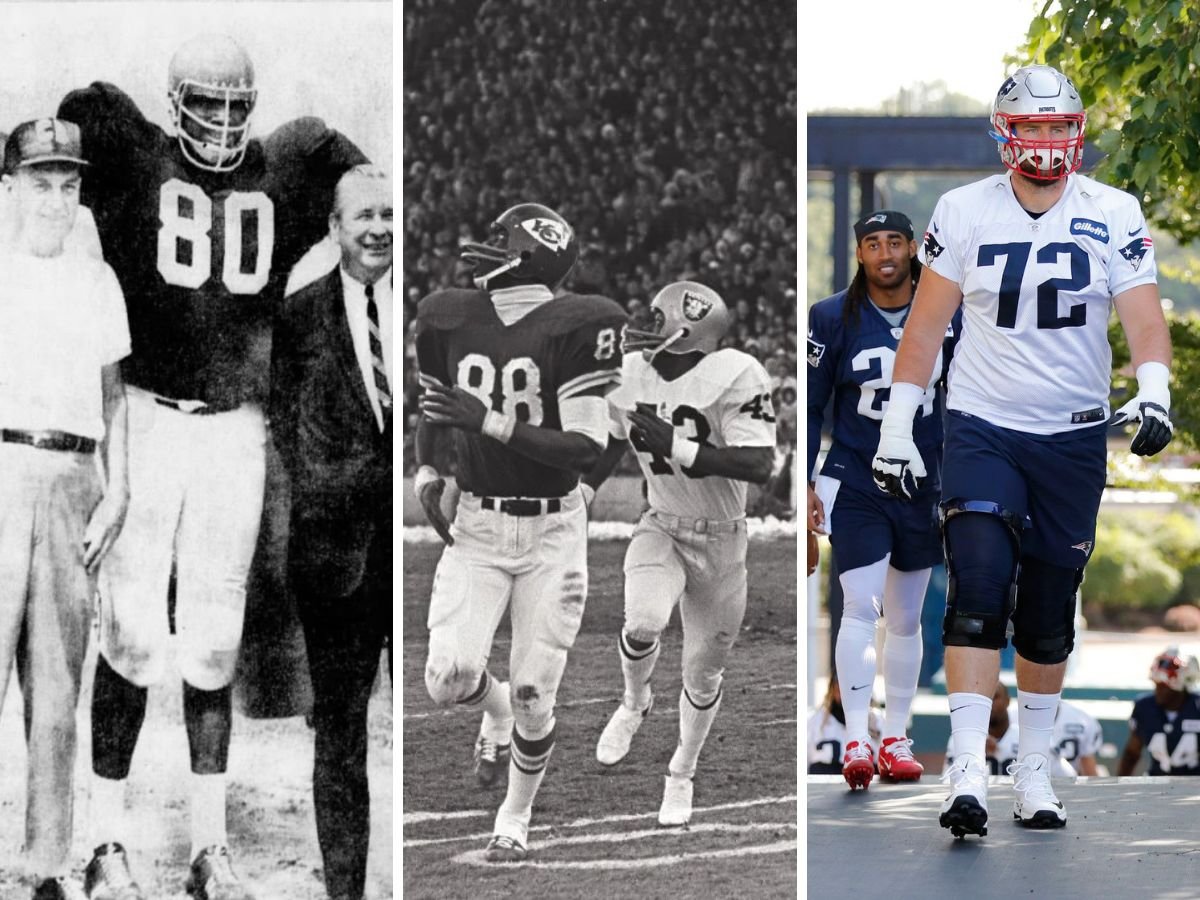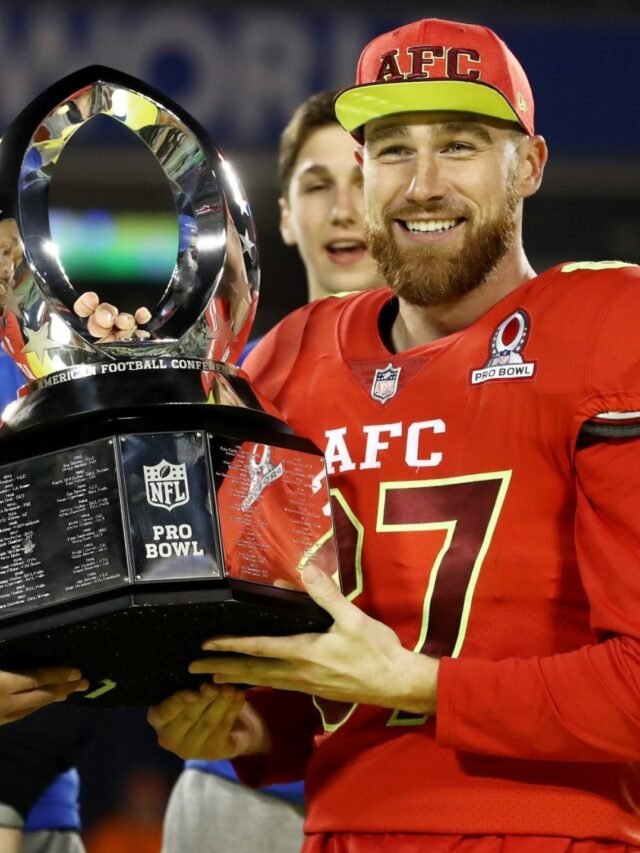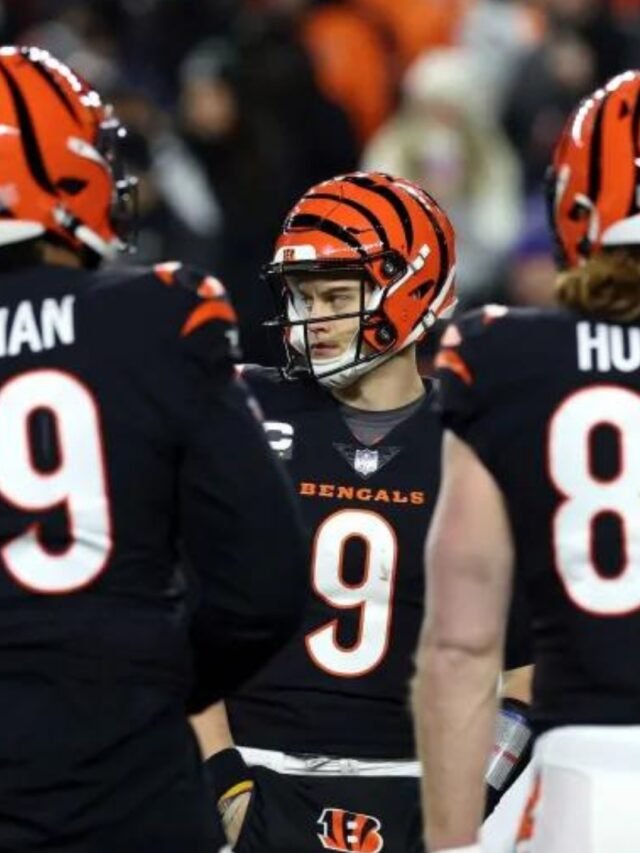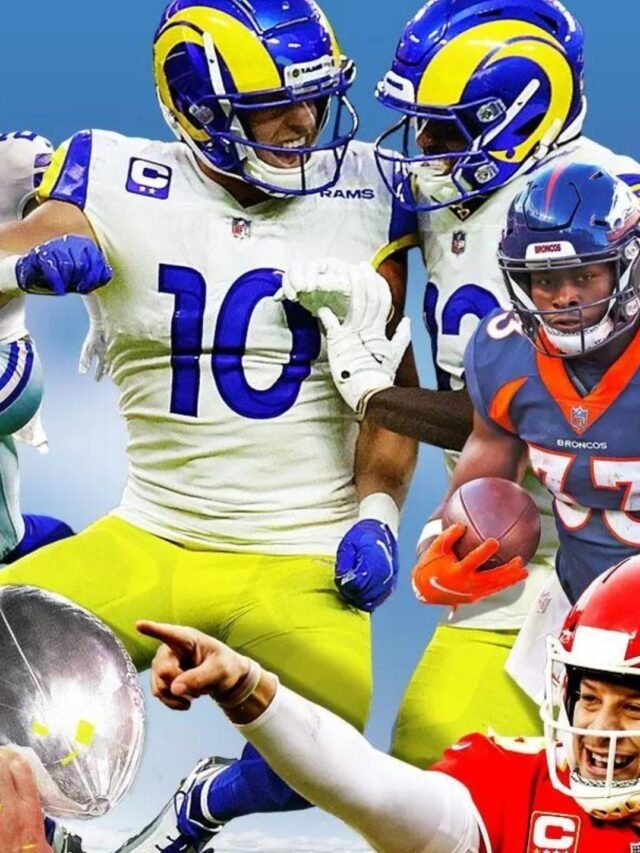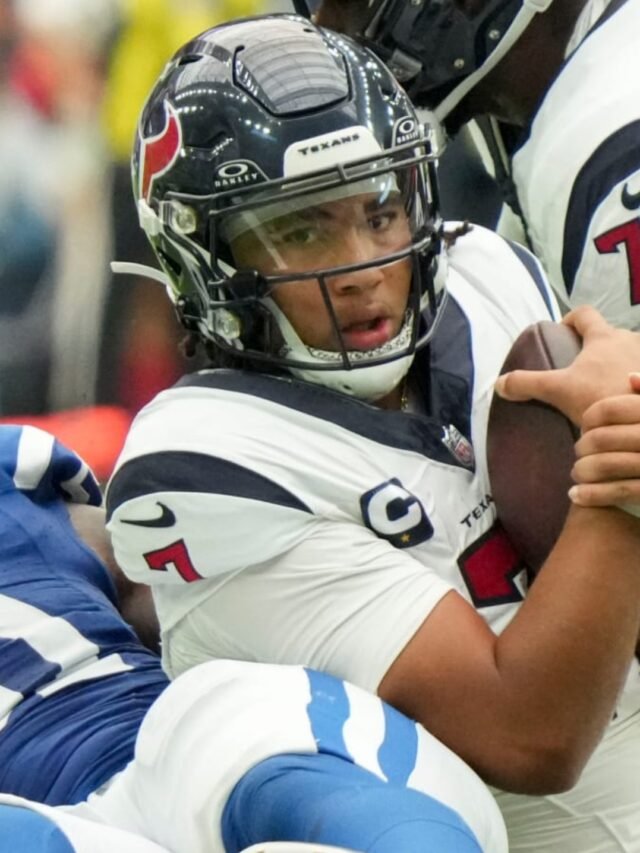The National Football League (NFL) is renowned for its diverse range of athletes, but few stand as tall (quite literally) as the select group of players who towered above the rest in the league’s history. This article will explore the top 10 tallest NFL players ever, revealing how their extraordinary height gave them a unique advantage on the football field.
Top 10 Tallest NFL Players Ever: List of Towering Titans
Richard Sligh (7’0″)
Standing as the tallest player in NFL history, Richard Sligh was a defensive tackle for the Oakland Raiders. His height was unmatched in the league, and although his NFL career was brief, his presence on the field was significant. Playing during the late 1960s, Sligh’s towering stature made him an imposing figure on the defense.
Morris Stroud (6’10”)
Stroud was a tight end for the Kansas City Chiefs. Notably, his height led to a rule change in the NFL; he would position himself under the goalposts during field goals to block the ball, prompting the league to outlaw this practice. Stroud’s career in the early 1970s was marked by an impressive average of 18.1 yards per reception.
Dan Skipper (6’10”)
An offensive tackle, Skipper has played for multiple NFL teams including the Detroit Lions. His height of 6’10” ties him with Stroud. As a current player, he brings a significant advantage to his role in the offensive line, using his height to outmatch opponents.
Ed “Too Tall” Jones (6’9″)
Jones is one of the most iconic players in NFL history, known for his dominant play as a defensive lineman for the Dallas Cowboys. His nickname “Too Tall” was a nod to his height advantage, which he used effectively in his 15-season career. He was a crucial part of the Cowboys’ defense, earning multiple Pro Bowl selections.
Jonathan Ogden (6’9″)
Ogden is often mentioned among the greatest offensive tackles in NFL history. Spending his entire 12-season career with the Baltimore Ravens, he was known for his incredible skill and size, earning 11 Pro Bowl selections and helping his team to a Super Bowl victory.
Demar Dotson (6’9″)
Although not as widely known as some others on this list, Dotson had a respectable career as an offensive tackle with the Tampa Bay Buccaneers. His height was a significant asset on the field, especially in protecting the quarterback and opening lanes for running backs.
Alejandro Villanueva (6’9″)
Villanueva’s journey to the NFL is remarkable. He served as an Army Ranger before joining the league. Playing as an offensive tackle for teams like the Pittsburgh Steelers and Baltimore Ravens, his height and athleticism have been vital to his role on the offensive line.
Dan McGwire (6’8″)
As the tallest quarterback in NFL history, McGwire’s career with the Seattle Seahawks and Miami Dolphins was short-lived. Despite his towering stature, he faced challenges in his position, showcasing that height isn’t the only factor in a quarterback’s success.
Jared Veldheer (6’8″)
Veldheer’s career in the NFL has been marked by versatility and longevity. Playing for teams like the Oakland Raiders and Arizona Cardinals, he has shown that his height can be a significant advantage in the offensive line, particularly in pass protection.
Harold Carmichael (6’8″)
Carmichael, a wide receiver mainly for the Philadelphia Eagles, used his height to great effect throughout his career. Known for his ability to out-jump defenders, he had a successful career, highlighted by impressive stats and several Pro Bowl appearances.
Read: Who is The Youngest Quarterback in the NFL? The Complete Details
Impact of Height in the NFL
Here’s an in-depth look at how height influences various aspects of the game:
1. Advantage in Physical Matchups:
- Offensive and Defensive Line: Height provides a significant advantage in the trenches. Taller players in these positions often have longer arms, giving them a better ability to engage and control opponents. This reach advantage can be crucial in both protecting the quarterback and disrupting the offense.
- Receivers and Defensive Backs: For wide receivers, height can be a major advantage in jump-ball situations, allowing them to reach higher points than their defenders. Similarly, taller cornerbacks and safeties have a better chance of contesting high-thrown balls, reducing the effectiveness of tall receivers.
2. Field Vision and Awareness:
- Quarterbacks: While being tall can give quarterbacks a better vantage point to see over their offensive lines and read defenses, it’s not a sole determinant of success. Quarterback performance depends more on arm strength, accuracy, mobility, and decision-making skills.
- Linebackers and Safeties: Height can assist these positions in better visualizing and reacting to plays, especially in pass coverage. Taller linebackers and safeties can cover more ground in zone defenses and have an advantage in disrupting passing lanes.
3. Physical Attributes vs. Skill Set:
- Height is just one physical attribute and must be complemented by skill, technique, and athleticism. A tall player without the necessary speed, agility, or technique might not succeed against more skilled, albeit shorter, opponents.
4. Role of Height in Draft and Recruitment:
- NFL teams often look favorably on height during the draft and recruitment, especially for specific positions like offensive tackle or defensive end. However, scouting also heavily focuses on overall athleticism and skill.
5. Position-Specific Impact:
- Some positions, such as running back or cornerback, place less emphasis on height. In these roles, agility, speed, and quick decision-making are often more valuable than being taller.
6. Changing Trends in the NFL:
- The NFL’s evolution in tactics and play styles also influences how height is valued. For instance, the increased focus on the passing game in recent years has elevated the importance of height in wide receivers and tight ends.
7. Height as a Psychological Factor:
- The imposing physical presence of taller players can have a psychological impact on opponents. It can be intimidating and sometimes forces opponents to alter their game plans.
8. Limitations and Injury Risks:
- Taller players may be more susceptible to certain types of injuries, such as knee and lower back issues. Their center of gravity can also affect balance and agility, particularly in positions requiring quick directional changes.
Read: Who Have the Most MVPs in the NFL History? The Complete Details
The Bottom Line
These players demonstrate that in a sport as physically demanding as football, height can be a significant asset, especially in positions where reach, visibility, and physical dominance are crucial. Each of these athletes used their stature to leave a lasting impact on the game, showcasing the diverse range of skills and physical attributes that can lead to success in the NFL.

